Tag: UV powder coating
Expanding Application area for UV powder coatings
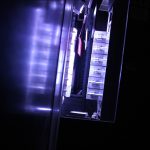
Expanding Application for UV powder coating. Blends of specific polyesters and epoxy resins have permitted the development of smooth, high-performance finishes for wood, metal, plastic and toner applications. Wood Smooth, matte clear coats have been successfully applied on hardwood and on veneered composite board, such as beech, ash and oak. The presence of the epoxy partner in the binder has boosted the chemical resistance of all the coatings tested. An attractive market segment for the advanced UV powder coating isRead More …
Smooth finishes and wooden UV powder coating furniture
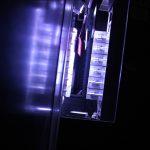
UV powder coating furniture with smooth finishes and wooden substrate UV Powder coating for Smooth, Matt Finishes Blends of specific polyesters and epoxy resins permitted the development of smooth, matt finishes for metal and MDF applications. Smooth, matt clear coats were successfully applied on hardwood, on veneered composite board such as beech, ash, oak and on PVC used for resilient flooring. The presence of the epoxy partner in the binder boosted the chemical resistance of all the coatings. The best smoothnessRead More …
Comparison between UV coatings and other coatings
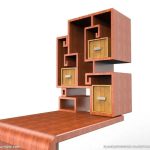
Comparison between UV coatings and other coatings Even though UV curing has been used commercially for over thirty years (it is the standard coating method for compact disk screen printing and lacquering for example), UV coatings are still relatively new and growing. UV liquids are being used on plastic cell phone cases, PDAs and other handheld electronic devices. UV powder coatings are being used on medium density fiberboard furniture components. While there are many similarities with other types of coatings,Read More …
UV-curable Powder Coatings Advantages
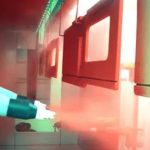
UV-curable Powder Coatings Advantages UV-curable powder coatings is one of the fastest coating chemistries available. From start to finish the entire process for finishing MDF takes 20 min or less, depending on chemistry and part geometry, making it an ideal finish for applications that require a quick turnaround. A completed part requires only one coat, allowing increased production with 40 to 60 percent less energy than other finishing processes. The UV-curing process is much simpler than other finishing technologies. CuringRead More …
UV powder coatings bring the benefits to heat sensitive substrates
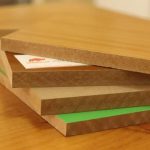
UV powder coatings bring the benefits to heat sensitive substrates Powder coating provides a durable, attractive and economical alternative to liquid paints and laminates for a wide range of heat-sensitive products such as glass and plastic materials. Powder coatings are dry, 100 percent solids paints that are spray-applied in a process similar to liquid painting. Once coated, products are conveyed through a curing oven, where the powder melts to form a durable, attractive finish. Powder coatings have long been theRead More …
What is Benefits of UV Powder Coating on Wood
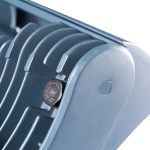
What is Benefits of UV Powder Coating on Wood UV powder coating technology offers a fast, clean and economic attractive method to achieve high-quality finishes on wood-based substrates. The coating process consists of the following steps: First the article is hung or placed onto a conveyor belt and the powder is sprayed electrostatically onto the object. Then the coated object enters the oven (temperatures of 90-140 degC are sufficient) where the powder melts and flows together to form a film.Read More …
The Use of Polyester Epoxy Combined Chemistry for UV Powder coating
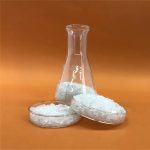
The combination of methacrylated polyester and acrylated epoxy resin offers an interesting blend of properties to the cured film. The presence of a polyester backbone results in good resistance of the coatings in weathering tests. The epoxy backbone gives outstanding chemical resistance, improved adhesion and smoothness. An attractive market segment for these UV powder coating is as replacement for PVC laminates on MDF panels for the furniture industry. The polyester/epoxy blend is achieved in four major steps. The polycondensation in theRead More …
Binder and Crosslinkers for UV Powder Coatings

Binder and Crosslinkers for UV Powder Coatings The most suitable approach for a coating formulation is the use of a major binder and a crosslinker. The cross¬linker may control the network density for the coating, while the binder determines properties of the coating such as discoloration, outdoor stability, mechanical properties, etc. Furthermore, this approach will lead to a more homogenous concept in the powder coating applications as a category bringing similitude to thermosetting coatings where crosslinkers such as TGIC andRead More …
Optimal Performance of UV Powder Coatings
Powder coating cured by ultraviolet light (UV powder coating) is a technology that combines the advantages of thermosetting powder coating with those of liquid ultraviolet-cure coating technology. The difference from standard powder coating is that melting and curing are separated into two distinct processes: upon exposure to heat, UV-curable powder coating particles melt and flow into a homogeneous film that is crosslinked only when it is exposed to UV light. The most popular crosslinking mechanism used for this technology isRead More …
Advantages of UV powder coating systems
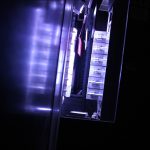
UV powder coating powder formulations consist of:UV powder resin,Photoinitiator,Additives,Pigment / extenders. Curing of powder coatings with UV light can be described as “the best of two worlds”. This new method makes it possible to benefit from the advantages of high cure speed and low cure temperature as well as environmental friendliness. The main advantages of UV curable powder systems are: Low system costs Application of one layer Maximum powder use with overspray recycling Low cure temperature High cure speed HardlyRead More …
